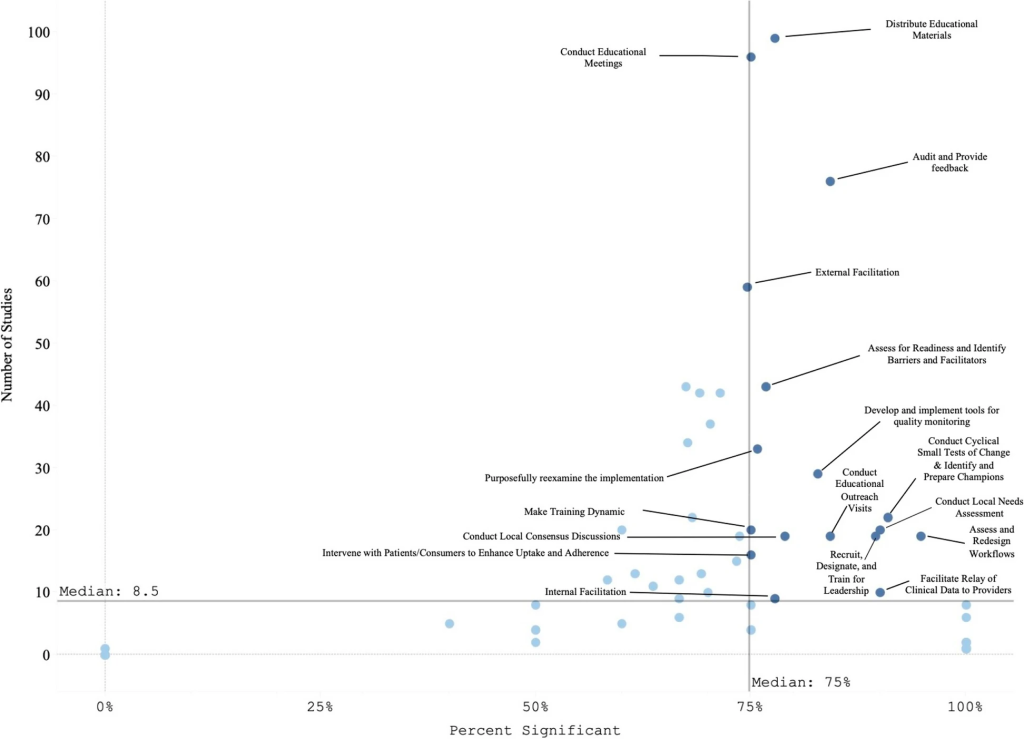
Implementing Healthcare: Insights from Dr. Matt Chinman
We had the privilege of speaking with Dr. Matt Chinman, a community-based researcher affiliated with the Pittsburgh VA and RAND Corporation. Dr. Chinman is a leading expert in implementation science, and he recently conducted a comprehensive systematic review of various implementation strategies in healthcare settings.
Our conversation delved into the inspiration behind this significant study (which we previously wrote about here), the challenges faced in classifying diverse strategies, and the real-world applications of their findings.
What’s the inspiration behind conducting this systematic review of implementation strategies in health care settings? What gaps in existing research were you aiming to address?
There are many implementation strategies available. While there has been research on their effectiveness, there had not been a good review that is agnostic to setting or type of evidence based practice (EBP). Many of the recent reviews are narrower in scope. We wanted to synthesize the literature across a range EBPs and settings.
Your study highlights several effective implementation strategies, such as Distribute Educational Materials and External Facilitation. What were some of the challenges you faced in identifying and classifying these strategies across diverse studies?

We published ERIC—the list of 73 strategies that we used to organize the review—in 2015. We found that as the review went back in time (and especially before ERIC), the documentation of implementation strategies was not as clear. Also, some authors and some papers had less information on the strategies, making it more difficult to classify.
In your findings, certain strategies like Audit and Provide Feedback were often linked to significant improvements in health outcomes. Could you elaborate on why these particular strategies might be more effective than others?
Audit and Feedback was been well tested and found to be effective in many studies. Tracking the implementation of an EBP and providing that data back to the implementers remains a powerful tool to improve implementation. The old axiom that “what gets measured gets done” applies here. It is helpful to know what your current status is before making improvements.

How do you envision the results of this review being applied in real-world health care settings? Are there specific examples or case studies where you’ve seen these strategies make a tangible difference?
Administrators and researchers alike need tools to decide how to improve implementation of EBPs. Having an easy to understand review of the evidence for implementation strategies (and a corresponding visualization of that information) can help them make better strategy choices that leads to better outcomes. In terms of an example, in two different studies on Getting To Outcomes (GTO), we saw that the Audit and Feedback component of GTO improved implementation fidelity of both a teen pregnancy and a drug prevention program.
What are the next steps for your research? Are there any new areas of focus or specific implementation strategies you plan to investigate further based on the findings of this review?
Our group at the Pittsburgh VA have several areas of focus we are working on. One is using existing data on CFIR and ERIC strategy use to train an AI that can make strategy recommendations based on CFIR strategies experienced. Another focus is to apply Coincidence Analysis to the data from our strategy review to better discern which individual strategies contribute to outcomes. One finding from the review was that most studies of strategies employed a bundle of multiple strategies, making it difficult to determine which strategy was having an impact. Coincidence Analysis uses Boolean logic that is able to determine an association between the presence of a strategy and positive outcomes.
Empower Your Network – Subscribe and Share!
Unlock key insights with ‘This Week in Public Health.’ Subscribe for free and share to drive change as part of a dedicated community.”


